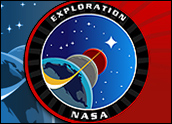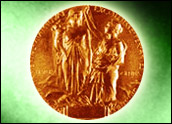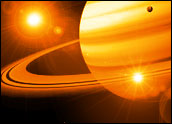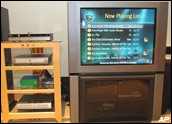
NASA is poised to take a closer-than-ever look at the closest planet to the sun. The space agency’s Messenger spacecraft will zoom over Mercury’s surface in the wee hours of the morning on Monday, coming within 124 miles of the rocky ground.
The move marks NASA’s second scan of the surface in its first mission to Mercury in decades. Messenger made one other swipe earlier this year, in January, coming within about 150 miles of the planet. It’s expected to uncover even more new images and information in this next, closer go-round.
Covering New Ground
The last and only other time humans have explored Mercury was back in the 1970s. NASA’s Mariner 10 zipped around the planet three times, snapping shots of about 45 percent of the surface. Since then, Mercury’s largely been ignored.
“It doesn’t have possibilities of life like Mars and it doesn’t have a fabulous atmosphere like Jupiter, or a tremendous ring system like Saturn,” Michael Bakich, senior editor of Astronomy Magazine, told TechNewsWorld. “It’s not as near the edge of the solar system like Pluto. It’s a rock — it doesn’t have much of an atmosphere — and it’s really close to the sun. It’s difficult to observe and not really on the minds of scientists that much,” he said.
Monday’s mission will result in 1,200 previously unseen images and will shed light on the 55 percent of the planet never before mapped.
“That other half is still a mystery to us,” Bakich noted.
Messenger’s Mission
The Messenger mission has already led to several new discoveries. Based on the data collected in January, NASA learned that the planet is shrinking faster than had been thought. They also found that volcanic activity helped form its surface — something not previously understood. Messenger’s ultimate goal right now, though, is to use gravity to get into a good spot.
“It allows them to move the spacecraft into a position where it will more easily enter orbit around Mercury,” Bakich explained. “Once it orbits Mercury, then it’s not just going to be when it flies by that it can get these great pictures — it’s going to send them back on a reasonably continual basis,” he pointed out.
Messenger will conduct one more fly-by, in September, and is scheduled to enter orbit by 2011. NASA hopes to keep it orbiting for a full year to see what other information can be uncovered.
“We’re finding things that, geographically, we haven’t seen elsewhere in the solar system, certainly not on Mercury,” Bakrich said. “We’re learning a lot.”





















































